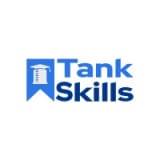This informal CPD article, ‘Developing Competency Frameworks for Tank Storage Industry Personnel‘, was provided TankSkills, who provide consulting and training for oil, gas, marine, and tank terminal industries including tailored HR solutions, efficient staffing models, and strategic recruitment.
The tank storage industry is essential in the handling and distribution of liquid bulk products such as petroleum, chemicals, and edible oils. Given the high-risk nature of these operations, ensuring that personnel possess the right skills and knowledge is vital for both safe and efficient operations. A competency framework provides a structured approach to training and assessing tank storage personnel, enabling companies to meet regulatory standards, reduce operational risks, and enhance performance.
1. What is a Competency Framework?
A competency framework defines the specific skills, knowledge, and behaviors required for various roles within an organization. In the tank storage industry, such a framework ensures that personnel are equipped to safely handle hazardous materials, maintain critical storage equipment, and comply with safety and environmental regulations. Competency frameworks typically include both technical competencies (e.g., understanding tank storage operations and safety protocols) and behavioral competencies (e.g., problem-solving, decision-making, and teamwork).
2. The Importance of Competency Frameworks in Tank Storage
The tank storage industry is subject to strict safety and environmental regulations. These include guidelines set by international bodies such as the International Safety Guide for Oil Tankers and Terminals (ISGOTT), as well as local regulations governing hazardous material handling and spill prevention. A well-constructed competency framework ensures that personnel are thoroughly trained to meet these legal and regulatory standards, reducing risks of accidents and operational failures.
Furthermore, competency frameworks help standardize procedures across multiple facilities, ensuring consistency in operations. Standardization reduces human errors and helps create a safer, more efficient work environment.
3. Core Competencies for Tank Storage Personnel
Several core competencies are essential for personnel in tank storage facilities, which must be integrated into any competency framework:
- Technical Knowledge: Personnel must have a deep understanding of tank operations, emergency shutdown systems, vapor recovery units, and loading/unloading mechanisms. Additionally, knowledge of the chemical properties of stored liquids, including their flammability and toxicity, is crucial.
- Safety Protocols: It is essential for employees to be proficient in risk identification and mitigation, use of personal protective equipment (PPE), and adherence to safety protocols for spill, leak, and fire incidents. Knowledge of emergency procedures is also key in minimizing hazards.
- Regulatory Compliance: Understanding environmental laws and industry standards, including emission controls, waste management, and hazardous material handling, is critical. Personnel must be trained to ensure compliance, which helps avoid fines and penalties while ensuring environmentally responsible operations.
- Soft Skills: Effective communication, teamwork, and leadership are vital, especially during emergency situations. Personnel should be capable of making quick decisions under pressure and working collaboratively to prevent accidents.
4. Implementing Competency Frameworks
The development and implementation of competency frameworks require a systematic approach, following these key steps:
- Job Analysis: This involves identifying the various roles within the facility and determining the specific competencies required for each. Input from industry experts and the use of job analysis tools help to accurately define these competencies.
- Training Programs: Once competencies are identified, appropriate training programs must be developed to address any skill gaps. These training programs should focus on both technical skills and behavioral competencies, combining classroom instruction with hands-on experience.
- Assessment and Certification: Regular assessments are necessary to ensure personnel meet required standards. Certification programs should be implemented to validate that employees are competent in performing their roles, promoting accountability and safety.
- Continuous Improvement: Competency frameworks must be regularly updated to reflect changes in technology, regulations, and best practices. Continuous learning helps ensure that employees remain capable of adopting new operational techniques and safety protocols.
5. Benefits of a Competency Framework
The implementation of a competency framework offers numerous benefits:
- Operational Efficiency: By ensuring that personnel have the required skills, competency frameworks contribute to smoother and more efficient operations.
- Risk Mitigation: Competent employees are better equipped to handle hazardous materials and emergency situations, reducing the likelihood of accidents and operational downtime.
- Regulatory Compliance: A structured framework ensures adherence to environmental and safety regulations, helping facilities avoid costly penalties and fines.
- Employee Development: Competency frameworks emphasize professional growth, providing employees with opportunities for career advancement. This not only boosts job satisfaction but also improves staff retention rates.
Conclusion
Developing competency frameworks is essential for ensuring that personnel in the tank storage industry possess the skills and knowledge necessary to safely and efficiently perform their roles. By focusing on both technical and behavioral competencies, these frameworks enhance operational efficiency, promote safety, and ensure compliance with stringent industry regulations. Furthermore, they provide employees with opportunities for professional growth, fostering a culture of continuous improvement within the industry.
We hope this article was helpful. For more information from TankSkills, please visit their CPD Member Directory page. Alternatively, you can go to the CPD Industry Hubs for more articles, courses and events relevant to your Continuing Professional Development requirements.
References
1. International Tank Storage Association, "Competency Development in High-Risk Industries."
2. Hydrocarbon Processing, "Safety Protocols and Training for Tank Storage Personnel."
3. ERTC, "Standardizing Competency Frameworks for Storage Facilities."
4. Tank Storage Magazine, "Training and Development in the Tank Storage Sector."
5. ISGOTT, "International Safety Standards for Oil Terminals and Tankers."
6. Tank Storage Magazine, "Soft Skills for High-Pressure Environments."













